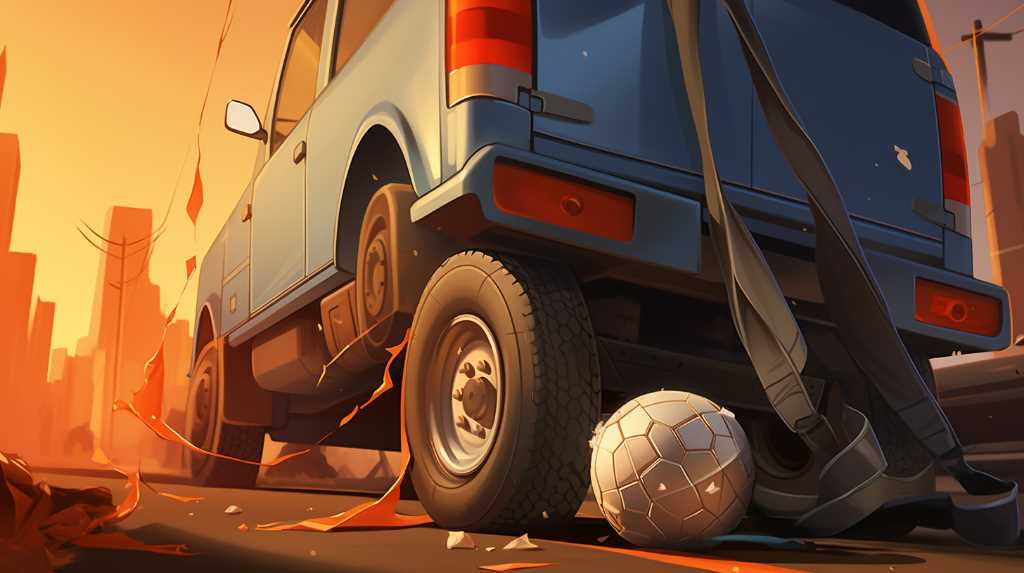
Knee injuries are common after truck accidents because of the huge forces involved. The knee has many parts that can get hurt easily in these high-impact crashes.
The Anterior Cruciate Ligament (ACL) and Posterior Cruciate Ligament (PCL) in the knee often get torn if the knee twists suddenly or bends too far back. The meniscus, which is a cushion in your knee, can also tear if the knee moves sharply or with a lot of force.
The kneecap, or patella, can break during a hard hit. Sometimes the knee can get dislocated or become unstable, which might mean someone will need surgery and could have trouble moving normally for a long time.
Understanding knee injuries from truck accidents is very important. It helps us make better safety gear and find good ways to treat these injuries.
Anterior Cruciate Ligament (ACL) Tears
ACL tears happen a lot in truck crashes because of the strong hits that twist or bend the knee more than it should go. The ACL is important for keeping the knee stable, and it can get hurt if the knee stops quickly or twists hard during a crash. These kinds of injuries usually come from a hard hit that pushes or twists the knee.
Doctors use an MRI to see if the ACL is torn. To fix an ACL tear, you might just need physical therapy or, for worse tears, surgery. It depends on how bad the tear is and what you need to be able to do physically.
Posterior Cruciate Ligament (PCL) Injuries
Injuries to the posterior cruciate ligament (PCL) in the knee are usually caused by a hard hit to the front of the knee, like what might happen in a truck crash. The PCL isn’t injured as often as the ACL, but it’s still very important because it helps keep the knee stable by stopping the lower leg bone from moving too far back.
If the PCL gets hit hard, it can tear partially or all the way through. Doctors can check how bad a PCL injury is by using special X-rays called stress radiography or an MRI scan.
For treatment, you might just need physical therapy and to wear a brace, but if the injury is really bad, you might need surgery to fix it. After treatment, doing exercises to strengthen the knee is key to getting back to normal and avoiding future problems like a wobbly knee or joint pain.
Meniscal Tears and Damage
People who are in truck accidents often hurt their knees, especially the meniscus, which is the cushioning cartilage between the thigh and shin bones. A meniscus tear can be a small rip or a big one, and it usually happens when the knee twists or turns sharply—something that happens a lot during car crashes.
Someone with this injury would have a painful, swollen knee and wouldn’t be able to move it as well as usual. To figure out how bad the tear is, doctors will use an MRI scan. Depending on the tear, treatment could be doing exercises to make it better, stitching the tear up, or sometimes even taking out the damaged part.
It’s really important to find out what’s wrong quickly and start the right treatment to make sure the knee can work properly again and to avoid more problems in the future, like arthritis.
Patellar Fractures
Suffering from direct impact during a truck accident, victims often sustain patellar fractures, which involve the shattering or cracking of the kneecap. This type of injury disrupts the extensor mechanism of the knee, which can severely compromise lower limb function. Classification of patellar fractures is based on the fracture pattern and includes transverse, stellate, and marginal fractures. Clinicians utilize radiographic imaging, such as X-rays or CT scans, to ascertain the extent of the fracture and to plan appropriate treatment.
Management may range from non-operative, with immobilization and physical therapy, to surgical intervention involving open reduction and internal fixation. Recovery outcomes depend on the fracture complexity, the adequacy of articular surface restoration, and promptness of intervention. Early mobilization is often recommended to prevent joint stiffness and muscle atrophy.
Knee Dislocation and Instability
A knee dislocation happens when the knee bones get out of place, usually because of hard hits like those in truck crashes. This serious injury interrupts the normal position of the thigh bone and the shinbone and can damage the knee’s supporting ligaments. It’s very important to get medical help right away to fix the dislocation and to check for any blood vessel or nerve problems that might have happened with the injury.
After a dislocation, the knee might not be stable and could dislocate again easily, which could lead to more knee problems in the future. Doctors often suggest surgery to fix or rebuild the torn ligaments, and then you would need to go through a strict physical therapy program. How well you recover depends on how bad the injury was and how well the treatments work.
Conclusion
Truck crashes often lead to serious knee injuries. These injuries, like torn ligaments, torn cartilage, broken kneecaps, and dislocated knees, can really affect how well someone can move and their overall life.
It’s important to figure out what the injury is and start treatment quickly to heal properly. Working with bone doctors and going through physical therapy are key steps to get the knee working again and to avoid long-term problems.